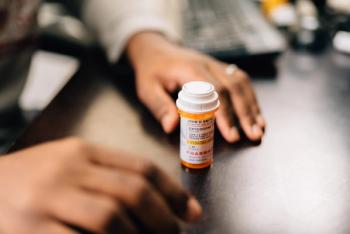
- August 2009
- Volume 75
- Issue 8
Oral Chemotherapy: Patient Advantages and Challenges
Dr. Mahay is a clinical oncology/hematology pharmacist at Banner Desert Medical Center, Mesa, Arizona.
The increase in oral chemotherapy for the treatment of cancer offers many patients a more convenient and less invasive treatment option compared with intravenous (IV) therapy administered in a clinical setting. This revolution in cancer treatment requires a new model for patient education, monitoring, and support—a model that depends on integration and collaboration among physicians, pharmacists, and other health care providers involved in the patient’s care.1,2
Oral chemotherapy offers several advantages over the parenteral route. Among the biggest advantages are patient convenience and flexibility in timing and location of administration.3 Another advantage involves flexibility of drug exposure by providing more prolonged therapy compared with intermittent IV exposure.
Oral chemotherapy also may lessen the use of health care resources for inpatient and ambulatory patient care services. Lastly, a better quality of life may be associated with oral chemotherapy compared with parenteral chemotherapy. 2,3
Drug Interactions
Whereas oral chemotherapy agents afford patients convenience and en hanced satisfaction, several concerns can arise that are unique to these agents. Many patients receive multiple medications in addition to their chemotherapy, thereby enhancing the potential for interactions.
Several oral chemotherapy agents interact with prescription and OTC medications, as well as food, nutritional supplements, and herbal remedies. For example, the solubility of dasatinib (Sprycel) is pHdependent, and acid suppression from proton pump inhibitors, histamine2 receptor antagonists, or antacids can reduce the exposure to dasatinib.4 Some agents, such as sorafenib (Nexavar), should not be taken with food (especially highfat food) due to reduced drug absorption and bioavailability.5 Absorption of vorinostat (Zolinza) is increased with highfat meals,6 and imatinib (Gleevec) should be taken with food to reduce gastrointestinal irritation.3
Side Effects
Dysphagia, odynophagia, nausea, and vomiting can present barriers to the use of oral agents, causing missed doses or precluding treatment by the oral route. In addition, when patients vomit a short time after taking their medication, drug absorption may be reduced.3
Another very important issue is the sideeffect profile of many of the newer oral agents which differ from the more traditional agents. Patients often are able to avoid adverse effects associated with more traditional chemotherapy; however, toxicities such as rashes, handfoot syndrome, and other effects have surfaced with some of the newer agents. For example, erlotinib (Tarceva) can cause an uncomfortable rash, sometimes resulting in discontinuation of therapy.7
Adherence
Nonadherence to the prescribed treatment is another possible difficulty with the use of oral agents at home or in other nontraditional settings, such as assisted living facilities, rehabilitation centers, nursing homes, and hospice. Problems with adherence may be the result of confusion and misunderstanding about the treatment regimen or failure to remember doses. This problem can be even worse if patients try to catch up on missed doses. This is less of a problem with parenteral therapy that is given in the clinic setting under health care supervision.2
Oral chemotherapy is administered in the home or a nontraditional setting with little or no supervision from health care providers with oncology expertise. Although self-administration at home is convenient for patients as well as caregivers, it may increase the risk of medication administration errors, thereby putting patients at risk for toxicity or therapeutic failure.2,3
Patient counseling is thus extremely important, given the numerous challenges which have arisen with the advent of oral chemotherapy. Patients need to be counseled on the safe handling of their medication, as well as be informed about the agent they have been prescribed for their treatment. Patients should be given a review of the medication’s purpose, number of pills to take, when and how to take them, and how to integrate them into their schedule.
Above all, patients need assistance in understanding how to identify, manage, and report side effects. They must be educated in the unique adverse profiles of each chemotherapy agent and how to address these effects. For example, lifethreatening birth defects are associated with lenalidomide (Revlimid) and thalidomide (Thalomid), and men and women receiving these drugs are required to obey specific requirements to prevent fetal exposure to the drug.2,3,8-10
Cost Considerations
Probably the biggest problem with oral chemotherapy is cost. Many oral chemotherapeutic agents are costly and place a financial burden on patients and the health care system. In addition to a significant difference between the cost of oral chemotherapy and traditional IV therapy, patients receiving a prescription for oral chemotherapy from a pharmacy are required to pay when the prescription is filled. Some patients may not be able to afford these agents and may ration their use.
Infusion patients, on the other hand, provide insurance information up front, receive treatment, and typically pay a balance due once insurance claims are processed. Clearly, potential candidates for chemotherapy need to be fully informed of the financial implications of beginning these medications.
In addition, many cancer patients are older Americans who are eligible for Medicare.8 Prior to the advent of Medicare Part D, coverage of oral chemotherapy was limited to oral drugs that had injectable counterparts that were covered under Medicare Part B, such as capecitabine (Xeloda). Some of the newer oral chemotherapeutic agents (eg, sunitinib) are covered under Part D; however, Part D coverage is not included within the standard Medicare plan, and patients must enroll in one of the many Part D plans offered by private companies.
A patient’s outofpocket expenses vary depending on the individual’s income, drug needs, and the prescription plan chosen. Medicare Part D covers the first $2000 (with a 25% copay), followed by a $2850 coverage gap known as the doughnut hole, for which the beneficiary must pay out of pocket. After the $2850 has been paid, the beneficiary is responsible for 5% of the remaining costs. Because oral chemotherapy agents are very expensive, some patients will enter the doughnut hole after a single prescription.
Patients who have difficulty meeting their copays oftentimes discontinue their therapy, which increases the risk of therapeutic failure. Cancelling office appointments due to an inability to pay increases emergency room visits and hospital admissions and shifts the financial burden from the patient to health care organizations.2,3,8
A variety of patient assistance programs have been established to help patients who have exhausted all of their resources. Patients may receive help in paying their copays from manufacturer patient assistance programs and patient advocacy programs. In addition, Webbased patient assistance program resource centers, such as the American Society of HealthSystem Pharmacists (www.ashp.org/pap), offer information for health care providers about manufacturer assistance programs. Each of these programs differs in its application process and requirements for financial information.
Pharmacists can help patients with financial troubles by obtaining information on pharmaceutical reimbursement programs and directing patients to assistance programs.2,3,8
Articles in this issue
about 16 years ago
Case Studiesabout 16 years ago
Pharmacist Rounds: Making an Impact- Students Improving Patient Careabout 16 years ago
Rx Product Newsabout 16 years ago
Health Systems Product Newsabout 16 years ago
GERD Watchabout 16 years ago
Pharmacists and the War on Cancerabout 16 years ago
News CapsulesNewsletter
Stay informed on drug updates, treatment guidelines, and pharmacy practice trends—subscribe to Pharmacy Times for weekly clinical insights.



















































































































































































































